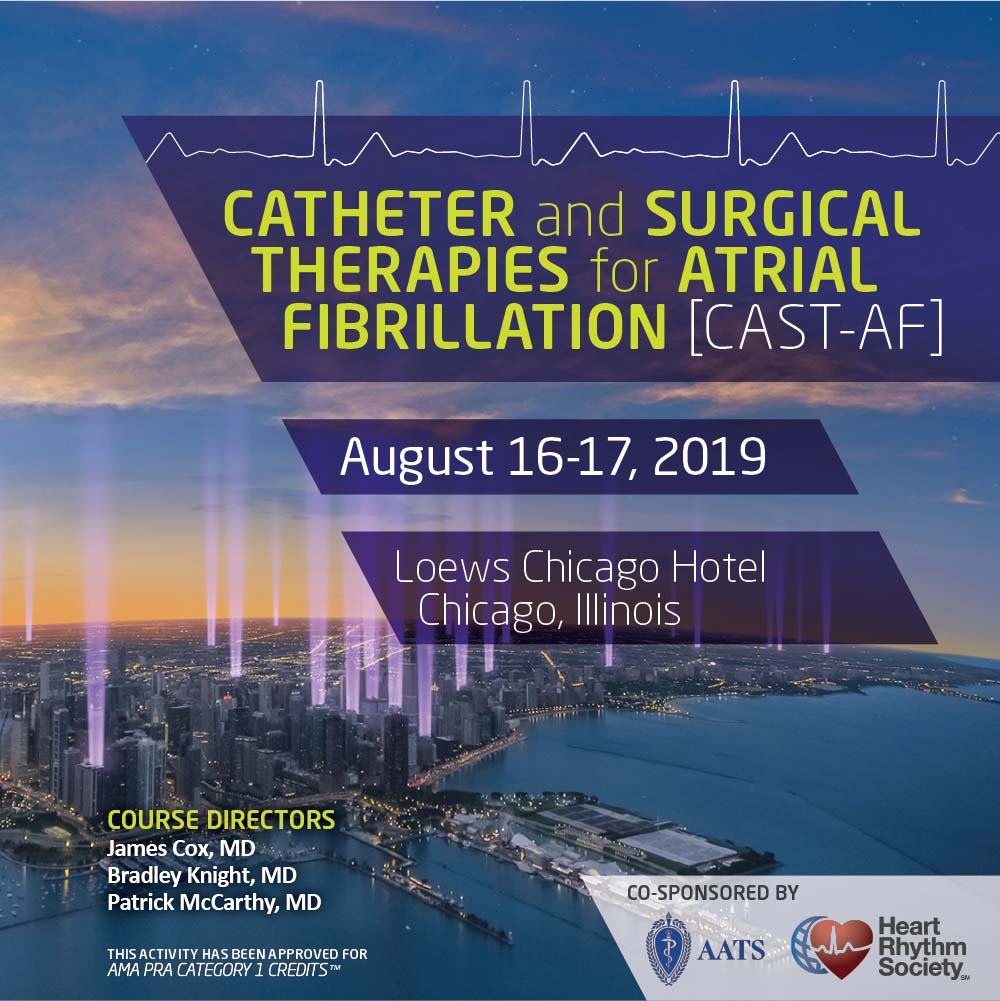ALERT!
This site is not optimized for Internet Explorer 8 (or older).
Please upgrade to a newer version of Internet Explorer or use an alternate browser such as Chrome or Firefox.
Catheter and Surgical Therapies for Atrial Fibrillation (CAST-AF)
Location
Contact Information
Target Audience Cardiovascular Disease, Nurse Practitioner, Nursing, Physician Assistant, Vascular Surgery Overview This conference has attracted an international community of leading interventional electrophysiologists and cardiac arrhythmia surgeons, to present the contemporary and most advanced techniques for both the catheter and surgical treatment of atrial fibrillation. In addition, current recommendations for the management of the left atrial appendage will be presented and debated and the results of new LAA occlusion devices will be discussed. The format for the conference consists of plenary lectures, plenary roundtables, and plenary debates on topics of controversy as well as extensive specialty interventional EP and surgical breakout sessions. A special invited plenary lecture will also be delivered by Professor Amiran Revishvili of Moscow, Russian Federation, who is both an interventional EP and a cardiac arrhythmia surgeon. Audience participation will be by electronic means at the end of the plenary roundtables and plenary debates. Objectives Discuss the electrophysiology of atrial fibrillation Cite the newest concepts of atrial electrophysiology, including differences in endocardial and epicardial conduction patterns and how they can impact the interpretation of electrophysiologic mapping Identify the advantages and limitations of activation-time mapping, voltage mapping, and phase mapping for the analysis of the electrophysiology of atrial fibrillation Apply the most advanced techniques for the catheter ablation of atrial fibrillation Describe the most advanced techniques for the surgical ablation of atrial fibrillation Discuss the electrophysiological basis of catheter ablation for paroxysmal and non-paroxysmal atrial fibrillation Cite the current indications for catheter ablation of atrial fibrillation in paroxysmal and non-paroxysmal atrial fibrillation Explain the current results of catheter ablation for paroxysmal and non-paroxysmal atrial fibrillation Discuss the current results of surgical ablation for non-paroxysmal atrial fibrillation Determine the limitations of the HRS definitions of success and failure for the interventional (catheter and surgical) treatment of atrial fibrillation Examine the differences in the electrophysiology of primary (“stand-alone”) and secondary (“concomitant”) atrial fibrillation Discuss the electrophysiological basis of concomitant surgical ablation for atrial fibrillation in patients undergoing valve surgery with or without coronary artery disease. Review the surgical options for the treatment of atrial fibrillation in patients undergoing mitral valve, aortic valve, and/or coronary artery bypass surgery Restate the currently recommended surgical lesion patterns for the concomitant surgical treatment of atrial fibrillation in patients undergoing mitral valve, aortic valve, and/or coronary artery bypass surgery Discuss the current results of concomitant surgical ablation of atrial fibrillation during mitral valve, aortic valve, and/or coronary artery bypass surgery. Accreditation The Northwestern University Feinberg School of Medicine is accredited by the Accreditation Council for Continuing Medical Education (ACCME) to provide continuing medical education for physicians. Credit Designation Statement The Northwestern University Feinberg School of Medicine designates this live activity for a maximum of 14.75 AMA PRA Category 1 Credit(s)™. Physicians should claim only the credit commensurate with the extent of their participation in the activity.




